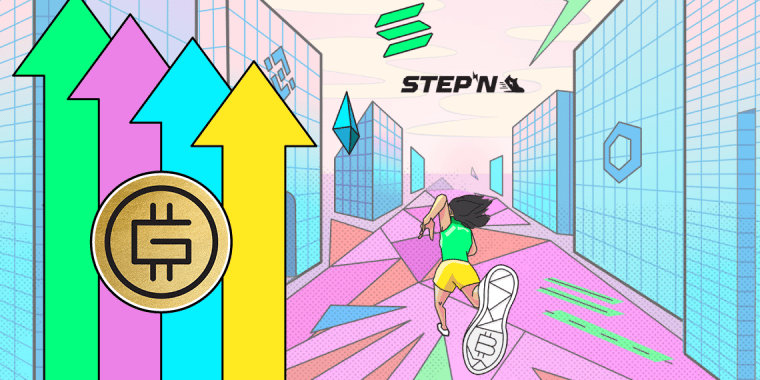
STEPN is a project that has engineered and brought to market the idea of “move to earn”. It was an innovation that garnered both interest and ridicule: some were optimistic that blockchains could incentivise people to do more exercise, whereas others (quite reasonably) questioned how it could be sustainable that someone could be paid for simply moving.
The link between inflation and sustainability
When projects are still small, high inflation rates are less problematic since the inflation is used to decentralise the ownership concentration between more parties, and because the high rate of growth in the network means that the selling pressure can be offset somewhat.
The clearest example of this is Bitcoin, which began with only one miner at first, Satoshi, and a very high rate of inflation. With each halvening the rate of inflation was cut in half, and more people adopted the network.
The inflation in Bitcoin is now much lower than it was, but still serves the same purpose: to reward new miners for coming into the network and securing it.
However, in the case of STEPN, the inflation rate has been somewhat problematic, since not only was the inflation rate so high, but this was met with a dramatic fall in demand.
The numbers of people who were using STEPN’s “move to earn” technology fell dramatically, and the runaway inflation meant that GST now has inflated to such an extent that a price recovery is nigh on impossible: the price of GST has now declined by over 99.6%.
Tamadoge’s deflationary pressures are far stronger
By contrast, the play to earn project Tamadoge has taken extra steps to ensure that there are highly deflationary aspects to the project. The deflationary pressures on Tamadoge are such that the token will become gradually scarcer with time, and this is expected to cause prices to rise.
The Tamadoge team has vowed that when purchases are made in the Tamadoge shop, 5% of the revenue will be automatically used to buy back and burn TAMA.
Tamadoge has far more potential than STEPN
STEPN captured the hearts and minds of many, and has fostered a large and loyal community, despite the shambolic performance of the token price.
By making use of Solana, STEPN was able to capitalise on low transaction fees in order to make their business model more palatable, but this may not have been such a sustainable idea either, especially when one considers the limitations of Solana.
As a blockchain, Solana has drawn a lot of critique for being too centralised, and for not managing to always stay in operation. It is possible for very few dApps to take up a lot of the network (at one point 20% of transaction fees paid on Solana were from STEPN users), but still manages to become overloaded.
Solana is far less tried and tested than Ethereum, where Tamadoge is launching, and once Ethereum completes the merge in approximately 12 hours, Solana’s niche will be undermined even further, as Ethereum will have successfully appeased environmentalists.
As such, Tamadoge’s offering for a play to earn ecosystem could well be far more sustainable than STEPN’s. Furthermore, the tokens that aren’t immediately supplying in the Tamadoge ecosystem have extremely long vesting schedules, so the community can be reassured that the team are incentivised to continue building on the project over the longer term.
Relevant news:
- Doodles Raises $54M In Funding To Boost Its Intellectual Property
- Terra Luna Classic Crypto Price Prediction – LUNC Price Falls by 51%
Tamadoge - The Play to Earn Dogecoin
- '10x - 50x Potential' - CNBC Report
- Deflationary, Low Supply - 2 Billion
- Listed on Bybit, OKX, Bitmart, LBank, MEXC, Uniswap
- Move to Earn, Metaverse Integration on Roadmap
- NFT Doge Pets - Potential for Mass Adoption